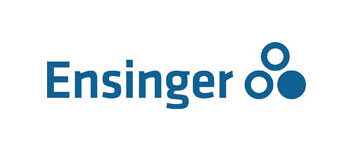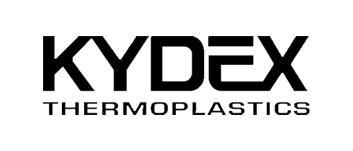Modern Plastics is a “Premier Distributor” for Ensinger and stocks “food grade” plastic materials – www.modernplastics.com
Ensinger Engineering Plastic stock shapes have been an accepted and growing alternative to metals for machining parts in the Food Industry for a significant number of years now. From simple TECAFINE® polypropylene conveyor guides to complex TECAPEEK® polyetheretherketone filler valves; these materials have earned a solid reputation for performance in a variety of challenging food processing environments.
Plastics were initially discovered to have a variety of advantages over stainless steel and other metals in the food industry. First, engineering plastics are lighter. In an industry where line speed is critical, lighter parts mean faster production, and lower energy usage. Metal parts also need regular lubrication and maintenance, which can lead to the potential for food contamination and in the worst case scenario, embarrassing and costly product recalls. Ensinger materials such as TECAFORM® acetal and TECAMID® nylon are self lubricating, especially when formulated with solid lubricants such as PTFE, and can lead to the possible elimination of external lubricants entirely. The improved wear resistance and up-time of bushings, bearings and other parts made from these stock shape materials has been significant.
One of the greatest advantages plastics have in the food environment is their resistance to corrosion. Since many areas in food production are subject to regular wash down procedures, engineers have selected high performance plastics such as Ensinger TECAPETTM PET (polyethylene terephthalate) and HYDEX® 4101 PBT (polybutylene terephthalate) in favor of even stainless steel which, while highly resistant to chemicals and corrosion; is heavy and can still be damaged under these conditions. In addition, these thermoplastics are highly resistant specifically to chlorine and caustic chemicals that are typically used in many wash down and clean in place systems on the food production floor.
Plastics can even be formulated to be resistant to the growth of harmful bacteria. By using stock shapes such as TECAFORM® AM that incorporate anti-microbial additives as the feedstock for their plastic parts, food producers can better insure against accidentally incubating microbes in areas that are hard to clean.
So we can see that Ensinger materials have been instrumental in the food industry to increase line speeds, reduce energy usage, maintenance costs and downtime, and have even been responsible for the reduction or elimination of lubricants and corrosion, improved chemical resistance, and bacterial reduction. Given this impressive list, we are still not satisfied that we have achieved all the productivity increases that are possible out of these versatile engineering materials.
By continuing to work with our customers, asking questions, and probing deep into the most challenging applications, we continue to bring new products to market that help increase productivity and food safety. One recent innovation has been the addition of colors – specifically blue – to our acetal to create TECAFORM® FG Blue. Many food plants use optical inspection systems to insure no unwanted particulate matter is shipped out in the food product. Since blue is the only color that does not readily occur naturally in the food chain (if you need proof, google George Carlin – Where’s the Blue Food?), these systems are easily able to pick out what does not belong and alert product inspectors. Should any pieces or worn plastic parts inadvertently find their way onto the production line; contaminants can be isolated before making their way into the final product.
This type of modification to our stock shapes can lead to a substantial increase in product safety, but only in those plants that utilize visual inspection equipment. Many plants use other methods of product inspection such as specialized metal detectors. From these instances, a whole new family of metal detectable thermoplastics has evolved. Products such as TECAFORM® AH ID and TECAPEEK® ID have been designed to set off alarms once again, should unwanted particulates find their way into the food product.
These plastics have the added advantage of being detectable even if they are not visible on the surface. The final method of inspection often employed on the food production line is the use of x-ray machines. The use of x-ray detectable plastics was pioneered by Ensinger almost a decade ago for applications in the medical industry to aid surgeons in the operating room who requested a combination of visibility (most plastics are difficult to distinguish from bone and tissue using x-ray technology), and lighter weight for such things as trauma fixation and joint replacement. The Ensinger XRO® product line has made the transition from the operating room to the food production floor an easy one, and the industry has embraced this new technology as well.
Since the trend in the plastics industry has been to develop individual solutions for each type of food inspection system – whether it is visual, metal or x-ray detection – the food industry has begun to ask for a single material that can satisfy all three detection scenarios at once with one product. The resulting innovation has spawned the newest generation of Ensinger stock shapes in acetal and PBT. TECAFORM UD Blue and HYDEX 4101UD Blue can both be used successfully regardless of the detection method used. These new blue colored, metal and x-ray detectable materials are once again expanding the envelope of applications in which they can be used, and making possible higher levels of food product safety and reliability than ever before.
As industrial and design engineers continue to strive to make their products better, more efficient, and longer lasting, those companies that truly want to cultivate a reputation for adding value will continue to turn to Ensinger as THE resource for new, versatile and innovative engineering plastic solutions to be integrated into their machined part designs.










0 Comments